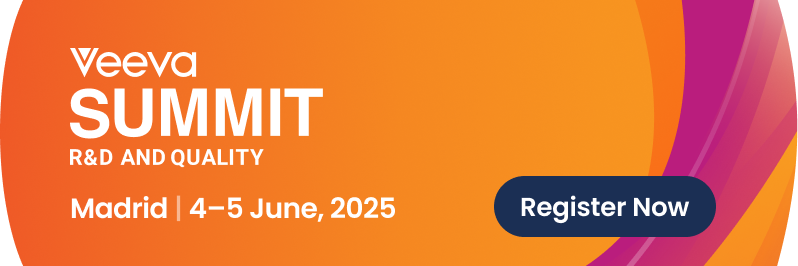Driving Safety Transformation through Strong Partnerships and Modern Technology
Current approaches to pharmacovigilance are no longer scalable with growing responsibilities, increasing data and complexity, and inflexible legacy systems. At the North American Veeva R&D and Quality Summit Connect, we saw safety teams that have strong business and IT relationships successfully embrace new approaches together and modernize processes and systems.
In the enterprise panel, two top 20 pharma companies discussed their digital transformation with automation, analytics, and simplified solutions. Bringing in modern safety applications will allow them to more efficiently gather, access, and gain a richer view into the pharmacovigilance data. Greater efficiency also shortens processes for more timely decisions and reduces overhead. Both IT teams want true cloud-based applications to easily keep up with technology advancements, and a unified solution built on a common platform to simplify the IT environment across the company. With a shared vision and culture of trust, the business and IT safety teams are challenging existing workflows and approaches. The new mindset allows both teams to adapt and better support the growing demands of safety.
The partnership between the business and IT is even more critical at small companies where there are limited resources. Bellerophon delivered an in-depth presentation on how the business lead and IT lead partnered to evaluate a new safety solution and implemented Vault Safety Essentials in 8 weeks. With a list of over 10 criteria, the team compared 4 solutions including the legacy system used at Ikaria before Bellerophon was spun out as an independent company. The implementation timeline, broken out into eight weeks, showed the activities for each area including planning, solution design and configuration, testing, validation, and training. They discussed challenges and best practices, such as their approach to stay within scope of the implementation, and shared experiences since going live on Vault Safety. The ease of use and flexibility enables the support team to complete system requests 50% faster than the previous system and the business team is taking a larger role in how the application is used and maintained.
With outsourcing of safety functions and increasing workloads, strong partnerships need to extend to CROs and other service providers. Many small and midsize companies outsource the safety database and struggle to gain visibility into their safety data. In a poll during the outsourcing roundtable, over half of the attendees selected ‘data access / visibility / sharing’ as the top challenge. Clinlogix, a global CRO and a NAMSA company, and Parker Institute for Cancer Immunotherapy (PICI), discussed how they use Vault Safety to seamlessly collaborate and gain real-time data access. PICI owns Vault Safety and provides access to Clinlogix for case processing. All parties have direct access to view data, track status, and participate in pharmacovigilance processes. With greater oversight, sponsors and CROs can improve alignment, mitigate risks, and better support safety. Clinlogix also shared how they are using Vault Safety’s built-in dashboard and reporting capabilities to gain visibility into 4 areas: operations, vendor oversight, regulatory compliance, and vigilance. The information enables Clinlogix to deliver a higher level of service and strengthen partnerships with sponsors and other clients.
Easily collaborating on safety data and content is essential for effective partnerships. However, pharmacovigilance technologies have primarily focused on safety data – improving case processing and management. With increasing regulations and localized requirements, such as the PSMF, content management is becoming a requirement for pharmacovigilance solutions. A global pharma provided an overview on how they are using Vault SafetyDocs, a cloud-based safety content management application, to efficiently manage their PSMFs while gaining global QPPV visibility. Content stakeholders are empowered to manage their documents and keep them up to date. They can make changes, collaborate, or send the content for QC review and approval – all within a single system and tracked in the audit trail.
Although pharmacovigilance is the responsibility of the safety team, success heavily depends on – internal and external partners, business and IT – working closely together, and technologies that are aligned with current business models and growing safety demands. Cloud-based pharmacovigilance solutions make it easier to upgrade to new releases and are accessible to all parties for seamless collaboration and end-to-end processes. With a unified approach that simplifies IT and reduces overhead, safety teams can focus resources on innovation and improving pharmacovigilance.
To hear more, view the Summit sessions on Veeva Connect or pre-register and join us live next year in Boston, October 17 – 19, 2022.

